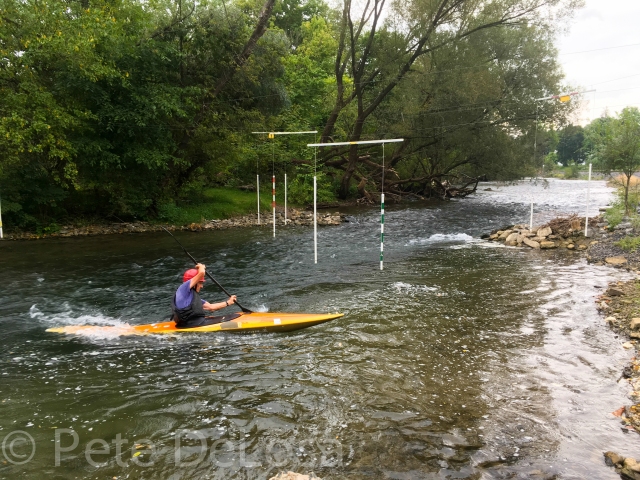BY OUTSIDE ADVENTURE TO THE MAX GUEST BLOGGER LYNN HALSTED
I’ve dipped my paddle into Tomales Bay on a handful of occasions. Mostly on moonless nights, to explore the bioluminescence, a light produced by a chemical reaction in living things in the water. Winds are typical, for Tomales Bay and Point Reyes National Seashore, north of San Francisco, Ca, but, for the second day in a row, the wind was almost non-existent.
This sunrise was a welcome site as I sipped my morning coffee and thought about the paddle ahead of us that day. We launched from Miller Park, which is located on the Eastern side of Tomales Bay. This is my first time launching on this side of Tomales. You pay at the kiosk to park, and the cement launch makes getting into the water a breeze.
Our Plan “A” was to head across the water, circle around Hog Island (protected), explore the Western shoreline before having lunch at White Gulch Beach.
If you’re an experienced paddler, you are never afraid to go with Plan B.
So, once everyone was in the water and after a quick safety talk, we paddled towards Hog Island. The wind, still non-existent, as you can see from these pictures. It was so pretty and calm! One of our paddlers was using a ‘peddle’ kayak for only the second time, and he indicated he was already getting tired after only 10-15 minutes of paddling.
So, we partnered someone up with him and continued to Hog Island. The eastern shore of the Island was closed due to sensitive Seal habitat and Seabird Colony. So we paddled around the island, my first time up this close, and talked about our plan. Our tired paddler was now a concern, as the wind had come and there were rather large swells that seemed to some out of no where. I’m serious, the conditions changed in a matter of minutes!
After a conversation with a fellow paddler who has been on this section of Tomales countless times, we decided it would be best to paddle back to the launch and let our tired paddler take out and rest. The rest of our group would paddle on the Eastern shoreline, heading inland. This must have been meant to be, as this turned out to be a beautiful paddle.
So, after our tired paddler was safe to shore and out of their kayak, we paddled by the little sitting area off of Nick’s Cove restaurant, where later we would enjoy an adult beverage. I was hopeful I could take this old gas pump for my backyard
 Most of us ladies had fun joking about our ideal ‘man’, stationed up on the hill, overlooking the bay as if to flag us in with his stoic stare and well positioned lantern.
Most of us ladies had fun joking about our ideal ‘man’, stationed up on the hill, overlooking the bay as if to flag us in with his stoic stare and well positioned lantern.
 A resident Bald Eagle was perched up in a tree, so I paddled under him and too this shot.
A resident Bald Eagle was perched up in a tree, so I paddled under him and too this shot. My favorite part of the day; Lunch! After about 2 hours of paddling, we found a great place to exit, stretch, and enjoy the sunshine as we ate our lunch. I even found a ‘planted’ piece of driftwood for my garden at home. Once our tummies were full, we decided to explore a little channel that only went inland a few hundred yards before dead ending into Highway-1. There was an Egret eating his lunch, but my pictures didn’t turn out well.
However, this picture of the Egrets turned out quite nicely. I’m sometimes amazed at the great shots I get. This was one of them. These Cormorants were drying out their wings and the silhouette was breathtaking.
After a long day of paddling, we headed back to the take-out. This will go down in my memory banks as a top 10 paddle experience.
Lynn Halsted is the founder of Sacramento Paddle Pushers,
Halsted started SPP, an online paddling meet up group in October 2010. As popularity of kayaking grew so did her group. It now has close to 500 members with a solid core of 60 paddlers actively taking part in trips through out California and even sometimes venturing into the Pacific Northwest. Catch up with more of Halsted kayaking adventures at her blog Dipping My Paddle. You can find Sacramento Paddle Pushers on Meetup.com.
Outside Adventure to the Max is always looking for guest bloggers. Contact us at Nickayak@gmail.com if you are interested.
























